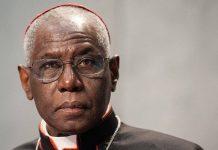Christ himself esteemed Saint Matthew by sitting at his table.

Newsroom (September 21, 2020 12:10 pm Gaudium Press) — Today, we celebrate the Apostle Matthew, the herald of the Good News from whom we inherit the great Gospel.
He was a tax collector, along with all that office implied then, and even today. No one likes that time when one must give one’s money to the State, but even less to people like Levi. St. Luke and St. Mark called him a thug of a foreign power through whom the Roman empire economically enslaved the people.
A tax collector: despised by society, loved by God.
The Romans chose the collectors from among the people under their rule, aware that the latter would know much better from which fortunes they could draw their income. Moreover, the people knew that tax collectors were thieves, who explored that position to get rich quickly.
Matthew worked in Capernaum, a city much visited by the Lord.
Surely Matthew had already listened to the Master, his preaching had moved him, and the initial seed of the grace was beginning to yield its fruit.
And this man, unlike the rich young man of the Gospel, began to lose his attachment to his riches, so that when the Lord, seeing him at the tax collection table, told him: “Follow me.” Matthew “got up and followed him.” (Mt 9:9).
Apostle to the Parthians, the Persians, the Egyptians
After the Lord’s ascension, Saint Matthew stayed some years preaching in Judea and then travelled to the Parthians and Persians, and then to Ethiopia. But before this scattering of the apostles, Saint Matthew wrote his gospel as Eusebius testifies in his Ecclesiastical History.
According to the accounts of the Apocrypha, he defeated two magicians who made themselves worshipped as gods, and he resurrected the daughter of king Egipus (or Hegesippus).
He was finally martyred like all the apostles because he opposed the marriage of King Hyrciacus with his niece Iphigenia, who had converted to Christianity through the work of the apostle. He was killed under the sword when he was praying at the foot of the altar after the Eucharist.
The evangelist St. Matthew is represented by the human figure, according to the vision of the “four survivors” of Ezekiel (1, 5 ff). The book of Revelation (4, 6-11) takes up this vision again. St. Mark is represented by the lion, St. Luke by the ox, and St. John by the eagle, for the highly elevated theology of his book.
The Liturgy applies to St. Matthew the following words of the Old Testament: “This teacher, well instructed in the Law given to Moses by the Lord God of Israel (…) the good hand of his God was upon him. (…) he had devoted himself with all his heart to fulfilling the Law of the Lord and to teaching Israel his commandments and precepts.” (Cf. Ezra 7, 6-10).
Jesus, the Messiah, wanted to honour St. Matthew’s table and went to eat at his house (Mk 2:15). It is also recalled in the Liturgy, highlighting the infinite mercy of the Savior, who wanted “to choose St. Matthew to turn him from a tax collector into an apostle”.
With information from Aciprensa



































